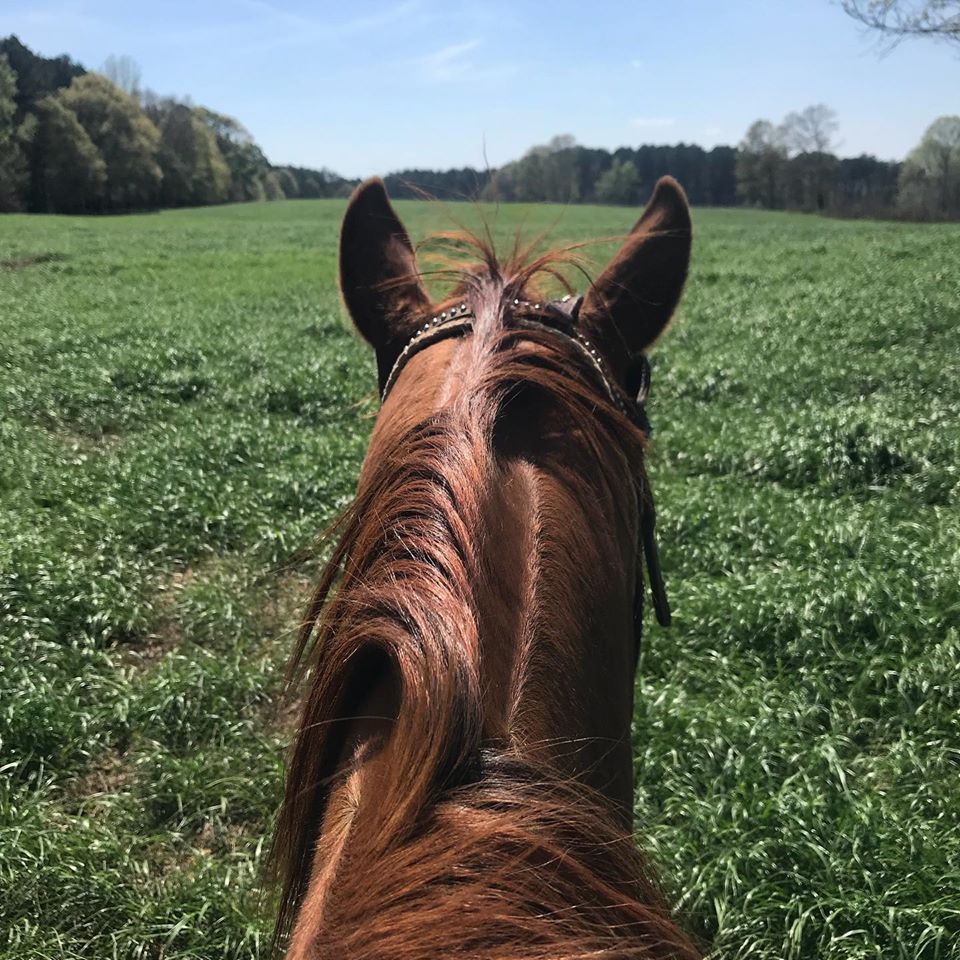
We are in the Fall and now is the time to begin preparing your pasture for next years growing season. Overgrazing, improper fertilization and pH, and lack of weed prevention can all lead to a poor quality pasture with low production of fiber for your equine partner. Start evaluating your pastures in the late Summer to have better grazing the next year.
SOIL SAMPLING: Always start with a soil sample to have it tested through your local extension office. This will determine if your pastures need lime or fertilizer and at what rate for the acreage of your pasture. one soil sample should cover up to 15 acres. I would recommend testing each turn out if you have multiples. For example, I have 2- 4 acre turnouts and did a sample for each pasture. Sample at a depth of 4 inches with about 20 cores from across the sample area.
FERTILIZATION: Fertilizing is a key practice to producing high quality forages and grazing for horses. Fertilizer materials have an analysis tag that shows the quantity of nitrogen (N) phosphate (P2O5) and potash (K2O) in the bag. These numbers are based on a percentage. For example, a 10-15-15 fertilizer contains 10 percent nitrogen, 15 percent phosphate and 15 percent potash. A pasture soil test will determine if a complete fertilizer application is needed. If the fertilizer contains all three elements (N, P, and K), then it is considered a “complete” fertilizer. Some pastures may only need a nitrogen fertilizer applied because grazing animals don’t take much potassium or phosphorus out of the soils. Splitting nitrogen (N) fertilizer applications in two (spring and mid-summer) provides the best yield distribution over the season. Applying N during a dry spell can burn the grass. Apply phosphorus (P) and potassium (K) if needed, based on the soil sample. These can be applied once in the spring.
MANAGING GRASS : Never graze your grass less than 3 inches or below. That area of the grass plant is essential for retaining carbohydrates to continue to grow and produce. The horse clips off the tops and grazing below that will increase weed issues and eventually they can outcompete the grass. Just use your hand to measure your grass height; typically the length of your fingers is about 3 inches. Horses are very selective and will over graze their favorite areas of grass. Once the other areas of the pasture has gotten too high, mowing will be required to keep the grasses growing. The best way to manage weeds is to have a healthy stand of desirable grass. However, sometimes herbicides are required to control weeds. By contacting your local extension office, you can get recommendations of what to spray for specific weeds and in certain grass pastures. Apply herbicides in early fall (around September 1st) for the most effective control. Follow any grazing restrictions listed on the herbicide label. Make sure to mow weeds at or before they flower. This will prevent new seeds from entering the soil. Mow pastures to a height of 4 inches three to four times a year or after rotating horses to control most annual weeds. Never mow below 3 inches and avoid overgrazing.
ROTATIONAL GRAZING: Rotational grazing can aid in healthier stands of grass and ultimately healthier horses. It involves sectioning off a larger pasture into smaller ones and rotating the horses among the smaller paddocks. The horses are forced to graze a more even pattern instead of selectively grazing over and over the grasses they like the most and will aid in keeping the grass more level throughout the field. Ideally you want to start grazing in the paddocks that is 6-10 inches tall and then move them when the grass is 3-4 inches tall. The paddock that was just grazed should be mowed to restore uniformity. Recovery time can be as little as 21 days in the spring when grass is rapidly growing. If you don’t have the option or fencing for rotational grazing, keep your horses in a dry lot or stalls until your pasture has recovered to at least 6 inches tall. A rotational grazing program provides flexibility and allows more efficient use of the forage produced.
For more information see this Forage Systems for Horses in Georgia publication.